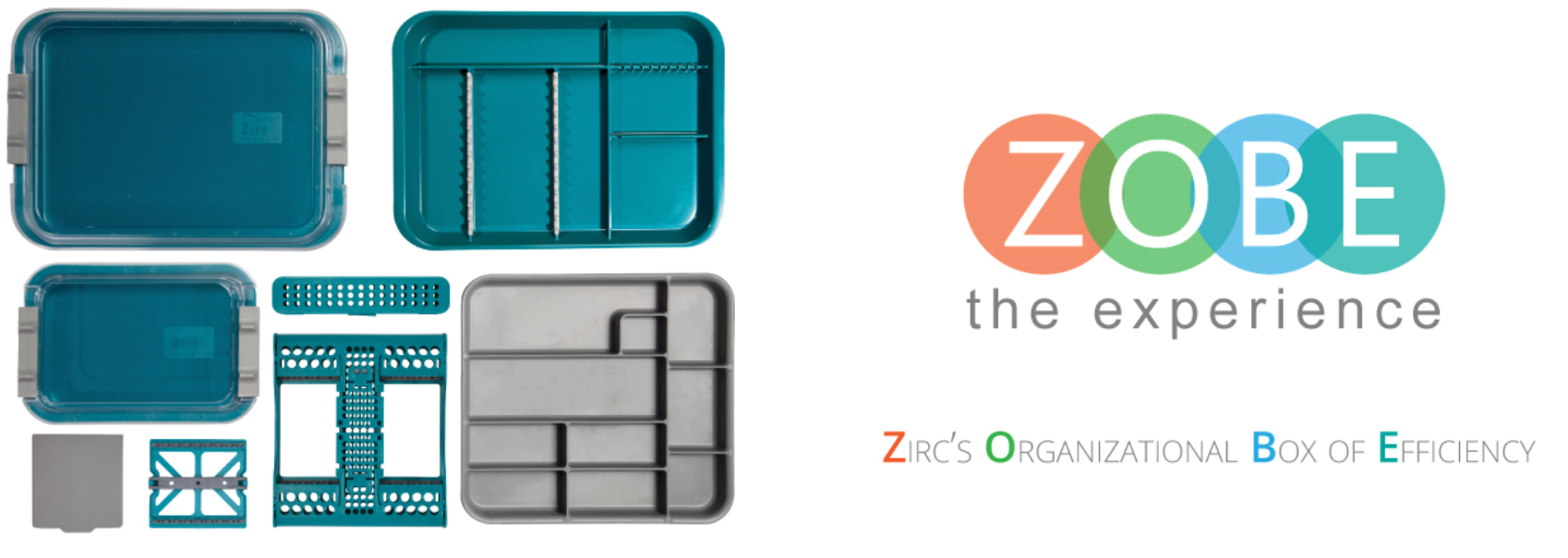Getting the most out of your dental composites

Dental composites are ubiquitous and versatile tools for your practice. However, they are also an expense, and in today’s dental practice with thin margins for profitability, it is essential to make sure you get the most out of your composite materials. From managing inventory to how you store that inventory, clinical use to placement best practices, we present you the best ways to get the most out of your dental composites.
Managing composite inventory
Throwing away hundreds of dollars’ worth of composite that has expired before you could use it can feel frustrating. Likewise, it can feel equally disturbing not to have enough of a particular product when you need it. To avoid oversupply and undersupply, it is essential to implement an inventory management system.
Per the Wisconsin Dental Association (WDA),having an inventory management system for all the materials in your practice can save you thousands by allowing for longer delivery times that accommodate more favorable pricing.[i] Composites would be a significant part of this inventory consideration.
The first step in managing inventory is knowing what you have and what you need to control. The WDA recommends making a list of any dental supplies that the authorizes team accesses during the workday. It can be a hard-copy list where you keep the materials of a shared doc on a cloud-based system. This list identifies what materials you need to manage.
The second step is establishing accountability. If a team member accesses the material, they must record it on the list (hard-copy or online), perhaps with their initials as well as the quantity and date.
The final step is to determine your order triggers. Some materials will be used consistently and are easier to predict the times when you should reorder. However, composite might not; there are many types of composite you keep in inventory for different uses. For these materials, the WDA recommends knowing how many days you need from your supplier from order to having the material in hand, and then estimate how much you use in a day. Multiply the delivery days required by the daily units used number, and that answer will be the amount of composite you have left on the shelf that serves as your trigger to order more.
To read the entire article from the WDA on inventory management, please click here.
Storing systems and success
In addition to managing inventory, it is also essential to store your composite correctly. This effort requires having a storage system for storage that is organized and complements the inventory management system you choose for the practice. It also means ensuring the materials are kept in the right circumstances to protect their quality and longevity.
Organization is essential to product control. Many industry experts agree that centralized storage over storing material in individual operatories is a best practice. Centralized storage allows you to group similar items and see what you have on hand at any given time. Furthermore, it helps you streamline suppliers by the product instead of ordering the same type of material from multiple suppliers.

Many organizing systems for centralized storage are available in the marketplace. For example, Zirc uses a ZOBE (Zirc’s Organization Box of Efficiency) system to color code the materials needed for treatment in portable tubs and treatment trays, so you can see what you have and what you need. Some practices use a tag system, which flags the last package of product you should pull from the shelf before you reorder, which leaves enough product in inventory to get you through the ordering and delivery timeline with your supplier.
Jennifer Sanders, DDS, has a small, private practice in Frenchtown, Montana. With two operatories, she admits that managing and storing inventory isn’t as challenging for her as it could be for practices with more treatment rooms. Dr. Sanders likes to use a rolling cart stocked with inventory for her operatories.
Continue reading on next page
“We have a rolling cart at each chair, and they each have the composite in there. We try only to keep the main shades that we use, and we don’t keep a lot of the ones that you don’t use very often because they do tend to expire before you get to them,” Dr. Sanders says. “Otherwise, we manage it by being conscious of only keeping in stock what we use.”
Also, you should ensure that your storage area can accommodate the conditions necessary to maintain the integrity of the product. Temperature is a significant factor for storing composite materials.
The storage temperature for your composite materials are vital because it affects the characteristics of the material. For example, the temperature of the composite affects its viscosity. In other words, when the resin just comes out of cold storage, the material handles stiffer than it does when it is warmer.[ii] Also, for syringe users, the Journal of Applied Oral Science suggests that syringe storage at different temperatures affects the flexural strength of the composite materials in a finished restoration.
Per Dental Update, it is not necessary to store all resins in refrigeration as long as the temperature in the practice or storage area does not venture into extremes.[iii] For example, you should not store silorane composite at a low temperature.[iv] However, before you throw all your composite onto a dark shelf in a storage closet, you should consult your manufacturer’s instructions because some bonding systems require refrigeration.
Clinical use
Composites also have a variety of uses in the practice. Their ability to bond to teeth makes them a versatile tool for direct and indirect restorative work in the practice. Composites are used for fillings, some types of adhesive bridges, inlays and onlays, veneers, closing diastemas, reshaping teeth, and crowns.
The different types of composite break down into three categories: universals, bulk fills, and flowables. Universal composites are created to be used anywhere, anytime, have a depth of cure of around 2mm. Bulk fills have around a 4mm depth of cure, which allows thicker layers and streamlines the composite placement process. Flowables have a lower viscosity than the other two types based on the percentage of fillers present, which makes it easier for them to get into the nooks and crannies of a preparation.
How you use each type of composite is up to you. Most clinicians adopt a strategy of choosing what “works best in their hands.” However, per Spear Education, finding that material for the restoration you need to place means assessing which product to use based upon the following characteristics:[v]
- Compressive strength: If you are placing a posterior restoration, will this composite hold up to the bite forces there?
- Handling: Will it adapt to the preparation and will you like working with this consistency of material?
- Translucency: Depending on whether you are placing in the anterior or posterior, will the translucency of the material affect the esthetics you are trying to achieve?
- Flowability: Do you need the material to flow into the prep and pulpal floor?
- Shrinkage: Will the polymerization shrinkage potential of this products’ resin material affect the case outcome?
- Polishability: Can you get the polish you need for the luster you want for the finished restoration?
Placement tips and tricks
One way you can get the most out of your composites is to combine the use of two types of materials, taking advantage of the strengths of each. For example, bulk fills are great for packing in a lot of material at once and streamlining the placement process. If you line the prep for a bulk fill with a flowable first, however, you can improve the bond between the composite and the adhesive surface. Moreover, per Dental Update, you reduce the chance of developing voids between them.[vi] However, experts also caution that the layer of the flowable composite should be thin to avoid the strain associated with polymerization shrinkage.[vii]
Dr. Sanders combines materials, particularly in restorations with an extensive prep. She will line the base of an in-depth prep in the posterior with glass ionomer or resin-modified glass ionomer to take advantage of those materials’ properties as well as making the most of her bulk fill inventory.
“That takes up a lot of space when I am doing that,” Dr. Sanders says. “So, that will cut down on the amount of composite that I am using.”
What you use in practice depends on what kind of restorative work you are doing. Most experts agree that you should find a product that you like in terms of how how it handles and looks. However, you might have different favorites for different areas of the mouth or type of restoration.
For example, Dr. Sanders uses both bulk fill and flowable in her practice. However, she uses the bulk fill 90 percent of the time, and the flowable around 10 percent. The flowable is better for small anterior restorations; the bulk fills are better for posterior restorations. It also drives how she stocks the shades of the materials.
“With the flowable, we are going to have more of the lighter static shades. For the posterior restoration, we know that with the patient demographic we have, A2 matches over half of them. So, that is what we keep in stock,” Dr. Sanders says.
Having a good idea of the material characteristics that you use and where you use it will help you get the most out of your dental composite. Dr. Sanders also recommends paying attention to material use and being conscious of your design as you are placing the material.
“I'm always conscious of how I am using it and dispensing it. I don't want to be wasteful of anything, so I'm careful that everything is dry and ready before I start. That way, I’m not having to pull it out because it's not curing or sticking properly. I'm also conscious of not overbulking so that I'm sculpting it in instead of trimming it down as much,” Dr. Sanders says.
However, Dr. Sanders isn’t saying to skimp on material or modifying the prep design to conserve material. The decay and tooth profile dictate the prep design. She is always conscious of making the best decision for her patients.
“If I have to do a substantial build up because the patient cannot do the crown right now, then it’s going to take a ton of composite to do it,” Dr. Sanders says. “That’s what is best for the tooth and the patient, so that’s what I do.”
References
[i] Shams, Ahmed. “Simple inventory system can save you thousands.” Wda.org. 8 May 2018. Web. 10 February 2020. <https://www.wda.org/blog/simple-inventory-system-can-save-thousands>.
[ii] Ibid.
[iii] McConnell, Robert & Sabbagh, Joseph & De la Macorra, Jose & Lund, Arne & Cassidy, Mike. (2011). Frequently asked questions in composite restorative dentistry. Dental update. 38. 549-52; 555. 10.12968/denu.2011.38.8.549. Accessed via the web. 11 February 2020: https://www.researchgate.net/publication/51841324_Frequently_asked_questions_in_composite_restorative_dentistry/citation/download
[iv] Chaves, Fernanda Oliveira et al. “Mechanical properties of composites as functions of the syringe storage temperature and energy dose.” Journal of applied oral science: Revista FOB vol. 23,2 (2015): 120-8. DOI:10.1590/1678-775720130643 Accessed via the web. 10 February 2020. https://www.ncbi.nlm.nih.gov/pmc/articles/PMC4428455/.
[v] Lavigne, Courtney. “Dental Composites: Types and Recommendations.” Speareducation.com. Web. 13 December 2018. Web. < http://www.speareducation.com/spear-review/2017/01/dental-composites-in-2017-what-to-look-for-and-what-to-get>.
[vi] McConnell, Robert & Sabbagh, Joseph & De la Macorra, Jose & Lund, Arne & Cassidy, Mike. (2011). Frequently asked questions in composite restorative dentistry. Dental update. 38. 549-52; 555. 10.12968/denu.2011.38.8.549. Accessed via the web. 11 February 2020: https://www.researchgate.net/publication/51841324_Frequently_asked_questions_in_composite_restorative_dentistry/citation/download
[vii] Ibid.
ACTIVA BioACTIVE Bulk Flow Marks Pulpdent’s First Major Product Release in 4 Years
December 12th 2024Next-generation bulk-fill dental restorative raises the standard of care for bulk-fill procedures by providing natural remineralization support, while also overcoming current bulk-fill limitations.